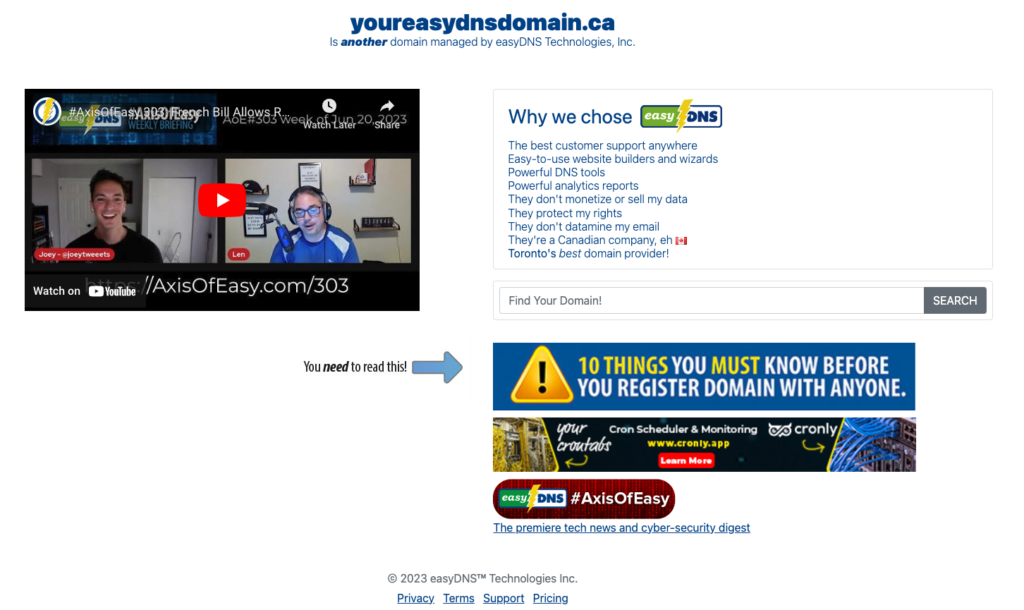When a domain name is registered or added for DNS service, it is automatically pointed to our default PARK page which looks like the following:

Account holders have the ability to customize their parked page and put in a contact email link, a custom message, upload a graphic, add some RSS feeds, or even Twitter feeds.
To point your domain or subdomain to our default PARK page, you’ll need to do the following:
1. Log into your easyDNS account and select your domain by clicking on MANAGE.
2. Click on DNS SETTINGS.

3. Click on the MODULAR EDITOR. Click on the EDIT icon for A RECORDS.

4. Enter @ under HOST and PARK under IP ADDRESS.
5. Click NEXT.

6. Confirm your changes.
Customizing Your Parked Page
To customize your domain’s parked page, go to your A RECORDS, and click on CUSTOMIZE.

You should now see a page that looks like the following:


Customized Links
Enter links for your parked page. ‘Link Text’ will determine the description shown on the page, while ‘URL or Email Address’ will control what action is taken when the link is clicked (sending an email to the specified email address or directing the viewer to the specified address on the web).
Custom Text
Here you can enter custom text such as a description of services, hours of operation, contact numbers, etc.
‘Header (optional)’ sets a header above the text – like a subject line, while ‘Text’ determines what information will be displayed. While new lines and paragraphs are automatically formatted in this field, HTML code will be stripped out. Please use the ‘Customized Links’ field for any external links or email.
RSS Feeds
Here you can list any RSS or Atom feeds that you want to display on your page. Use the ‘Header’ field to describe the feed for visitors (this is optional) and ‘Feed URL’ to set where the feed is located on the web. ‘Show’ lets you set how many recent posts from the feed should be displayed.
Twitter Feeds
Twitter feeds is a special option we provide that lets you set a Twitter user that you wish to have displayed on the page. easyDNS will follow any tweets that the user makes and post them on the parked page. Use this to display your company’s tweets and updates!
‘Header’ lets you describe the feed (eg. ‘Follow our company news on Twitter’) and ‘Twitter Username’ determines which user to follow and display (note: the username must not be using the ‘Tweet Privacy’ option). Use ‘Show’ to determine how many recent tweets to display on the page.
